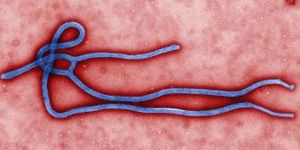
Because it's so large some might think our galaxy, The Milky Way, is the only one out there or even nearby but that isn't the case. The Milky Way is actually part of a cluster of over 50 other galaxies. Together these galaxies comprise the "Local Group." The nearest large galaxy, the Andromeda, is part of this group along with other lesser-known and smaller space objects. There's a new player in town though. A team of Russian and American space professionals has located an isolated dwarf galaxy and despite the fact that it's 7 million light years away, it is still part of the local neighborhood.
The team, led by Prof Igor Karachentsev of the Special Astrophysical Observatory in Karachai-Cherkessia, Russia, found the new galaxy using the Hubble Space Telescope Advanced Camera for Surveys (ACS) in August 2014. Given the designation of Kks3, the galaxy is located in the southern sky in the direction of the constellation of Hydrus. By space standards, the new galaxy is quite small. It's stars have only one ten-thousandth of the mass of the Milky Way.
Astronomers refer to galaxies of this size as "dwarf spheroidal" or simply dSph. A dSph galaxy lacks the spiral arms that the Milky Way and Andromeda possess. In addition these tiny systems will not have the materials necessary to form new stars. Hydrogen gas and space dust are both absent in dwarf galaxies and therefore they normally contain older and much harder to find relics.
There are many possible reasons why these smaller galaxies do not contain the raw materials to generate new space objects within them. One theory is that isolated objects such as Kks3 are formed in a different way than larger galaxies. It's possible that these galaxies were formed by an early burst of star formation that depleted available gas resources. Astronomers have also noted that most of the raw material once present in the dwarf galaxies may have been stripped out by nearby large galaxies such as Andromeda. In almost every case, dwarf galaxies are located near much larger companion galaxies.
Finding a dwarf galaxy is a daunting task. Because they lack large gas clouds, they are extremely difficult to pick out in surveys taken by satellites. Scientists usually have to find them by picking out individual stars that eventually show a pattern and reveal a dwarf galaxy. It is the celestial equivalent of a needle in a haystack. Only one other isolated dwarf spheroidal, KKR 25, has ever been in found in the Local Group, back in 1999 by the same research team.
Team member Prof Dimitry Makarov, also of the Special Astrophysical Observatory, commented: "Finding objects like Kks3 is painstaking work, even with observatories like the Hubble Space Telescope. But with persistence, we're slowly building up a map of our local neighbourhood, which turns out to be less empty than we thought. It may be that are a huge number of dwarf spheroidal galaxies out there, something that would have profound consequences for our ideas about the evolution of the cosmos."
 Because it's so large some might think our galaxy, The Milky Way, is the only one out there or even nearby but that isn't the case. The Milky Way is actually part of a cluster of over 50 other galaxies. Together these galaxies comprise the "Local Group." The nearest large galaxy, the Andromeda, is part of this group along with other lesser-known and smaller space objects. There's a new player in town though. A team of Russian and American space professionals has located an isolated dwarf galaxy and despite the fact that it's 7 million light years away, it is still part of the local neighborhood.
Because it's so large some might think our galaxy, The Milky Way, is the only one out there or even nearby but that isn't the case. The Milky Way is actually part of a cluster of over 50 other galaxies. Together these galaxies comprise the "Local Group." The nearest large galaxy, the Andromeda, is part of this group along with other lesser-known and smaller space objects. There's a new player in town though. A team of Russian and American space professionals has located an isolated dwarf galaxy and despite the fact that it's 7 million light years away, it is still part of the local neighborhood.







